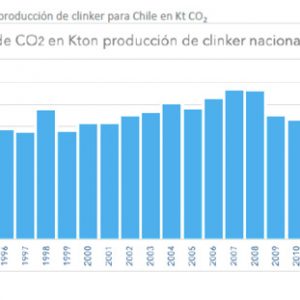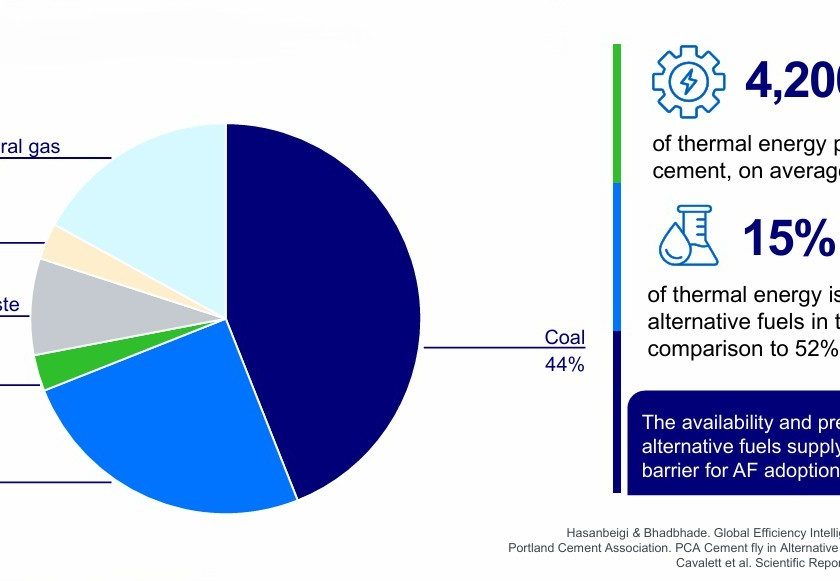Chile Will Reduce CO2 Emissions by 30% by 2030.
By Mauro Nogarin
 |
| (Figure A) Source: ICH |
 |
| (Figure B) Source: ICH |
 |
| (Figure C) Source: ICH |
The Inter-American Cement Federation (FICEM), together with the Chilean Concrete and Cement Institute (ICH), have established a series of measures that aim to gradually reduce CO2 levels in cement production in Chile over the next few years.
In this first phase, the participation of the companies Cemento Bio Bío, Melón and Polpaico Cement has been very important.
According to this project, three main parameters that have been monitored in recent years were established: clinker production, co-processing and energy efficiency (thermal and electrical). In addition to developing and maintaining a system and database for monitoring, reporting and verification of the cement sector compatible with the IPCC-2006 standard.
In terms of Chile’s climate policies, they have defined the objective of reducing emissions by 30% by 2030. Emissions in the production of cement were considered in the baseline of local clinker achieved in 2014.
It is important to highlight that this methodology, as the basis of this analysis, incorporated other indicators in order to better identify the appropriate technologies for CO2 reduction, which are not only limited to direct emissions, but also to the contribution in decreases in indirect emissions of cement.
These include the use of waste as an alternative fuel, which not only reduces direct CO2 emissions, but also reduces GHG emissions (greenhouse gases) generated in sanitary landfills, which should be considered as reduction hints in the production of cement.
In addition, co-processing is a safe and definitive disposal of waste, the latter being fundamental to meet the objectives set out in Chilean Law 20.920, which established the framework for “Waste Management, Extended Producer Responsibility and Development to Recycling,” promulgated in 2016.
According to the reports prepared so far by the ICH, cement production reported for 2014 was 4.2 million tons, that is, 79% of the total cement produced nationwide.
With this data, it was confirmed that the Chilean cement industry that participated in the report uses a high percentage of imported clinker, which accounts for 30% of the total of the used clinker.
And the total production of clinker in its own kilns for the year 2014, regardless of use or destination, was 1,999,736 tons.
- The direct emission was 893 Kg (CO2/ton clinker), a value very close to the one established by CSI as the default value to estimate the emissions of a purchased clinker (865 Kg CO2/ton clinker).
- The indirect incidence was 4%, not including the electrical consumption of the cement grinding processes.
As a result of the global potential for reducing CO2 emissions in Chile, we estimated the CO2 emission reductions already made by the Chilean cement industry using the base year 2014 and those that remain to be reduced until the year 2030.
To carry out this analysis, the ICH used as a base indicator the CO2 emissions associated with the manufacture of cement only with national Clinker in 2014, which were 581 Kg CO2/ton and the indirect 56 Kg CO2/ton cement, considering direct and indirect emissions associated with the electricity used. The sum of these two values reaches as a whole an emission intensity of 637 Kg CO2/ton cement.
With these data it can be observed that cement production in Chile has achieved a high performance in terms of energy efficiency and its associated CO2 emissions, reaching an estimated reduction of 30% compared to a scenario without implementation of the Papers. ECRA-2017. These reductions are in line with projections until the year 2030, which is consistent with the low Potential for Remaining Reduction (7.2%) determined with these same values in respect to 2014.
Sixty percent of the reductions were concentrated in thermal efficiency, while 30% corresponds to the factor of the clinker, 6% to the electrical efficiency and 4% corresponds to the co-processing. The main technologies that contribute to this reduction are the result of the use of last-generation ovens and pozzolan.
Considering the emission reduction technologies already implemented in 2014, and evaluating the technical and economic feasibility of the implementation of new technologies, it was determined that there is a potential reduction of 46 Kg CO2/ton cement, which represents a 7.2% reduction compared to 2014.
In this case, the reduction potential per axis up to the year 2030, shows that co-processing contributes more than two-thirds of the total reduction and if the indirect factor is also taken into account, the projected CO2 reduction reaches 75%, followed by the axis Thermal Efficiency and Electrical Efficiency.
However, according to the short- and medium-term projections of growth of the construction sector at the national level, an increase in the Factor Clinker is expected, which would imply an increase in emissions of 1 Kg CO2/ton cement.
Mauro Nogarin is Cement Americas’ Latin American contributor. From 1997 to 2001 he was a reporter for the Italian news agency ASCA from Germany to follow the economic events of ECOFIN. At the same time, he began a strong partnership with the Italian magazine Focus with issues related to European scientific research. Back in Italy after six years of residence in the city of Heidelberg (Germany), he worked from Italy for the weekly Stern and Bild Zeitung. Since 2005, he has lived in South America (Bolivia) and worked with the Italian geopolitics review Limes, the Italian gas and oil journal Staffetta Quotidiana, the Colombian oil magazine Petroleo Internacional, the German RE Sun and Energy, the U.S. magazine Renewable Energy World (Pennwell), the World Energy Project (Università di Bologna), Pan Americana Construction magazine and Worldoil magazine. He can be reached at [email protected].




